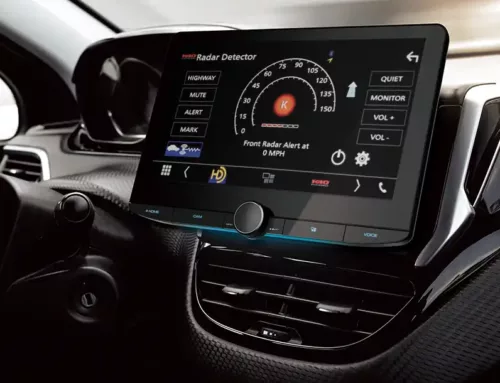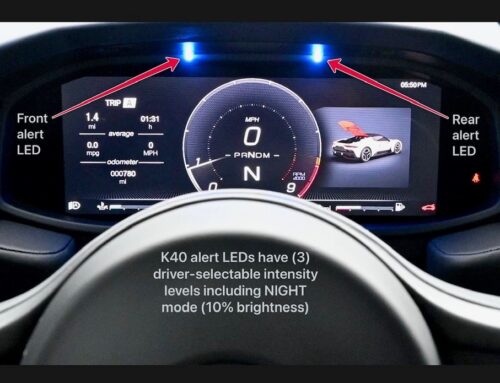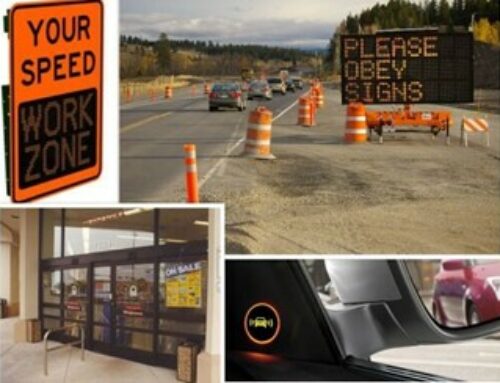Radar-Based Safety Features, Falsing, and Filtering…Oh My!
February 18, 2016

Some of you are well-versed on the topic of certain vehicle safety features causing false alerts in radar detectors. Others are just reading about it here for the first time. Whatever your knowledge level, we realized after talking with our K40 Consult service team, as well as considering our daily reading of various automotive enthusiast sites and forums, that this subject – and how we virtually eliminate any concern over it – can’t be discussed enough.
Understanding K Band Radar False Alarms
The Word On the Street Is….NOISE!
It seems as though our K40 Consultants are taking calls daily regarding K-band falsing and the questions being asked follow several themes:
– Why is this happening?
– How can this situation be fixed?
What Causes Radar Detector False Alarms?
Even more perplexing for some drivers is why their detector is going wild with false alerts, yet other vehicles that have a radar detector are silent. For example, a wife and husband that each owns a Porsche Macan have had radically different experiences. The wife owns a 2016 model and has a K40 360i system installed. The husband has an older model Macan with a different brand radar detector. They are understandably frustrated over why her vehicle is much quieter than his!
In a similar vein, an intolerable level of noise was the likely experience of a writer at a long respected automotive enthusiast media site who feels radar detectors presently offer little value because of the falsing issue.
To soothe your concerns on this subject, we’ll answer the “why and how” questions noted above so you can make an informed decision on the matter and understand why a K40 brand detector with K-Band filtering technology is still an excellent investment in driving protection.
The Heart of the Matter: Using Radar for Safety Features
In 1999, Mercedes Benz introduced the world’s first radar-assisted adaptive cruise control.
By the early 2000s, various luxury brand vehicle manufacturers began offering safety features (Adaptive Cruise Control, Collision Warning System, Blind Spot Monitoring, Lane Change Assistance, Rear Cross Traffic Alert) that utilized the short-range 24 GHz frequency bandwidth.
That’s when the “band began to play” so to speak.
You see, 24 GHz is the same frequency emitted by police K-band radar guns. Radar detectors are designed to scan the 24.050 – 24.250 GHz bandwidth to report the use of police radar. So, the problem is while these vehicle safety advances have been wonderful for drivers, they have also created a situation where radar detectors “see” this signal emission as police radar and report it to the driver. In some cases, repeatedly to the point of annoyance.
These safety features proved popular with consumers and thanks to economies of scale, the technology has trickled down into millions of vehicles that can intermittently broadcast this signal and overwhelm a nearby radar detector that doesn’t feature built-in, intelligent filtering technology.
Worldwide Standardization to the Rescue
Perhaps in response to the saturation of the 24 GHz frequency and the need for a wider bandwidth frequency for even more advanced safety features, the 2012 International Telecommunication Union (ITU) World Radiocommunication Conference discussed the need for a worldwide frequency band standardization. During the ITU’s November 2015 meeting, a decision was reached to adopt the short-range wideband 79 GHz frequency band as a global standard going forward for radar-based automotive features.
As a result, automakers have begun transitioning to the 79 GHz band for convenience and safety features. The 79 GHz band is not utilized by police radar whatsoever so these vehicle driving aids will not affect radar detectors and cause them to false. However, the previously manufactured K-band emitting vehicles will likely be on our roadways for years, even decades to come.
K40 Successfully Meets Today’s Needs
Future worldwide standardization is great, but as the first radar detector company to offer a ticket-free guarantee, we had to make sure we offered an effective solution today so K40 owners would be protected and didn’t shut off their K40 detector to stop the falsing noise.
Thus, we proudly introduced what we believe to be the industry’s first safety feature dedicated K-Band Filter in our portable models in February 2015 and shortly thereafter added this technology to our remote detector line. It features advanced signal processing that automatically evaluates and dismisses signals from vehicles on the road – including your own – that are equipped with radar-based features such as Blind Spot Assist from Audi®, Lane Departure Warning from BMW®, and Mercedes-Benz®’s Lane Keeping Assist. In less technobabble, we identify non-police vehicle signals and virtually eliminate false warnings.
Our built-in K-Band Filtering handles everything for you. There’s nothing to press, nothing to configure…just a continuation of the hassle-free, driving confidence we’ve given drivers for over three decades. Best of all? This filtering technology does not reduce detection range performance!
The Final Word: Peace and Quiet
Bottom line, our K-Band Filter automatically keeps things quiet so you can enjoy your drive with limited interruption. It’s just one of several technologies our radar detectors offer that deliver a superior driving experience. Want more peace-of-mind that your K40 system’s settings are maximized for your particular needs? Just give our K40 Consult service a call at 800-323-5608. It’s free and available 24/7.





